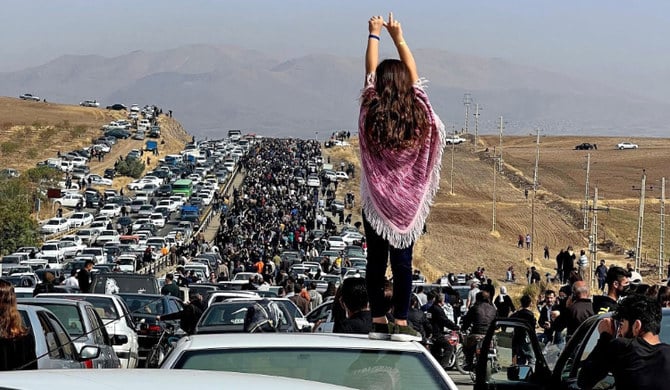
- ARAB NEWS
- 09 Jul 2025

Since its establishment in 1979, the Iranian regime has primarily focused on exporting its revolutionary ideals beyond its borders, while neglecting the needs of its population.
As the regime’s founding Supreme Leader Ayatollah Khomeini famously pointed out: “We shall export our revolution to the whole world.” This important mission of the Iranian regime is also incorporated in its constitution, which stipulates that it “provides the necessary basis for ensuring the continuation of the revolution at home and abroad. In particular, in the development of international relations, the constitution will strive with other popular movements to prepare the way for the formation of a single world community.”
One of the key tactics the regime has employed to export its revolution is instigating communities in other nations to rise up against their states, creating chaos that can be exploited by Tehran. For instance, soon after Khomeini assumed power, he directly called on the people of Iraq to rise up against their government. He said: “Honorable people of Iraq. You are the descendants of those who drove Britain out of Iraq; rise up and cut off his criminal hand from your country before this corrupt regime destroys everything for you. O tribes of the Euphrates and Tigris. Unite all together and with all the nation and eradicate this root of corruption before the opportunity is lost.”
Another strategy used by the Iranian regime to export its revolution is to sponsor and establish proxies in other nations to advance its parochial and ideological interests. For instance, the Islamic Revolutionary Guard Corps and its elite branch, the Quds Force, infiltrated Lebanon and consolidated the Shiite militias, which ultimately resulted in the creation of Hezbollah. In Iraq, Iran has sponsored a conglomerate of militias known as the Popular Mobilization Units. In Syria, it assembled a coalition of Shiite forces and militias that came from Iraq, Pakistan, Afghanistan and Lebanon. In Yemen, the regime’s goal was to create a political reality out of the Houthis, just as it did with Hezbollah in Lebanon.
When the regime fails to set up militia or terror groups in other countries, it instead attempts to establish terror cells or hire assassins to carry out terrorist attacks or assassinate journalists, officials and dissidents. For example, one of the regime’s own diplomats, Assadollah Assadi, is serving a 20-year jail term in Belgium over his role in a 2018 terrorist plot. Assadi reportedly delivered explosive materials to his accomplices with the aim of bombing an Iranian opposition rally in Paris. Had the plot not been discovered at the very last minute, hundreds of people could have been killed, including international dignitaries and many European parliamentarians.
The younger generation is fed up with the system and sees no prospect for progress under the current political establishment.
Dr. Majid Rafizadeh
While the regime continues to spend the nation’s resources and invests significant political and economic capital on exporting its revolution to other nations, it neglects the prosperity of its own people and silences those who dared to criticize it. It has also suppressed the Iranian people’s freedoms of speech, press and assembly.
Although many people have political grievances, the dire economic situation in Iran plays a key role in the ongoing protests. Many have become significantly disaffected with the regime’s handling of the economy and the hemorrhaging of the nation’s resources on foreign proxies. The continued devaluation of Iran’s currency has negatively affected their living standards, as well as significantly cutting into people’s purchasing power. The average monthly salary in Iran is about 3.5 million rials ($100). To put this into perspective, the average rent in urban areas often exceeds the salaries of full-time workers, without even taking into account other basic necessities such as food, medicine, transportation and school fees.
The younger generation is fed up with the system and sees no prospect for progress under the current political establishment. For example, Soheila, 21, from Tehran, said: “My father is a schoolteacher. Everyday after school, he also drives for Snapp (a ride-hailing company). My mother works at a factory and cleans houses after her shift. Each works approximately 15 hours a day. We (the children) rarely see them. In spite of the hard work, we still can’t make ends meet. There is no hope with the (mullahs) system.”
Therefore, it should not come as a surprise that the Iranian regime, which has focused for more than four decades on exporting its revolution to other countries while neglecting its own people, is now facing a crisis at home.
• Dr. Majid Rafizadeh is a Harvard-educated Iranian-American political scientist. Twitter: @Dr_Rafizadeh